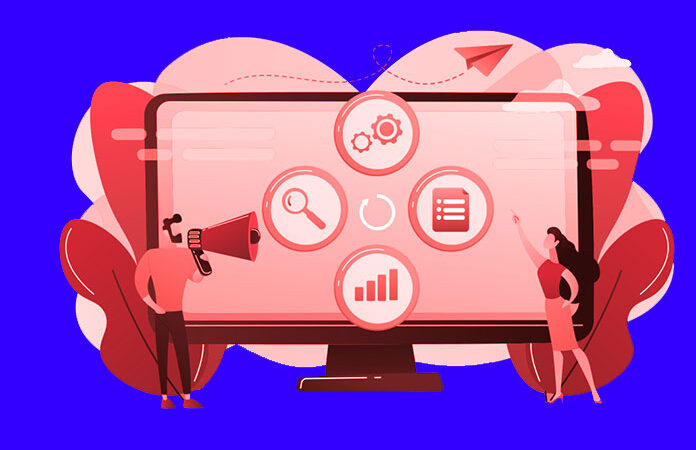Why Machine Learning is the Future: The Benefits of This Technology

Machine learning is a hot topic right now. You may have heard it mentioned in the news, or seen it crop up on social media. But what is machine learning, and why is it so important? In this blog post, we will discuss the benefits of machine learning and why it is poised to be one of the most important technologies of our time.
Table of Contents
What is machine learning and how does it work?
Machine learning is a subset of artificial intelligence (AI). It’s not to be confused with deep learning, which uses neural networks and algorithms for data processing.
The term “machine learning” was first coined by Arthur Samuel in 1959. He used it to describe the ability of computers to learn from experience without being explicitly programmed.
Today machine learning has become an essential part of our daily lives – you may use it every day but don’t even realize! For example, whenever you go shopping online and see items that are ‘recommended’ based on your previous purchases or search history, that’s machine learning at work as well as when you receive recommendations on Netflix or Spotify based on what you watch/listen to.
So how does machine learning actually work? In a nutshell, it involves using algorithms to analyze data and then making predictions or decisions based on that data. The algorithm is ‘trained’ on a set of data – for example, pictures of dogs and cats – and it will learn to identify the features that distinguish between dogs and cats. Once it’s been trained, the algorithm can then be applied to new data in order to make predictions about whether an image contains a dog or cat.
Machine learning can also be used for tasks such as facial recognition, voice recognition, natural language processing (NLP), and predictive analytics.
The benefits of machine learning for businesses and consumers
Machine learning algorithms can help businesses make better decisions by understanding and predicting customer behavior. This technology can also improve the accuracy of forecasts, which can help with inventory management and planning future marketing campaigns.
Consumers stand to benefit from machine learning as well. For example, online retailers are able to use machine learning algorithms to personalize product recommendations based on a customer’s purchase history and preferences. Additionally, services like Google Photos use machine learning to automatically organize photos into albums based on the contents of each picture.
Machine learning is quickly becoming one of the most important technologies of our time. It offers great potential for both businesses and consumers alike, and its benefits are only going to continue growing in the years ahead.
How machine learning will impact the future of technology
Machine learning is already impacting the future of technology, and its uses are only going to become more prevalent in the coming years. With machine learning, computers can learn how to perform specific tasks by themselves, without being explicitly programmed to do so. This makes it an incredibly powerful tool for businesses and organizations of all sizes – it can help them save time and money while also increasing efficiency. Additionally, machine learning can be used to improve products and services, making them more user-friendly and effective. In short, machine learning is the future of technology because it offers a host of benefits that simply cannot be matched by other methods like artificial intelligence (AI) or robotics.
Examples of how machine learning is already being used today
– Machine learning is being used by large companies like Google, Facebook, and Amazon to personalize search results and ads for their users.
– Banks are using machine learning algorithms to identify fraudulent transactions.
– Hospitals are using machine learning to predict patient outcomes and customize treatments.
– Retailers are using machine learning to track customer behavior and preferences in order to create targeted marketing campaigns.
– Law firms are using machine learning to read through thousands of legal documents in order to find specific information.
– Airports are using machine learning to analyze data from security cameras in order to detect suspicious activity.
So as you can see, machine learning is already being used in a variety of different ways across many industries. And as technology continues to improve, it will only become more prevalent in our everyday lives.
– Machine learning is being used by large companies like Google, Facebook, and Amazon to personalize search results and ads for their users.
– Banks are using machine learning algorithms to identify fraudulent transactions.
– Hospitals are using machine learning to predict patient outcomes and customize treatments.
The challenges that still need to be addressed with machine learning
Now that we have seen the many advantages of machine learning and why it is worth pursuing, let us take a look at some of the challenges that still need to be addressed.
– It is extremely difficult to tell how exactly an algorithm works
– The algorithms will not work if they are fed data with errors or outliers
– Data sets can often result in biased outcomes which is another challenge for ML developers
There are two ways in which you can overcome these hurdles:
– Identify potential biases early on by researching your training data. For example, if your dataset has more males than females, there could be a bias against women when applying machine learning functionality. Then ensure that this gets fixed before deploying any models into production.
– Use more sophisticated machine learning algorithms that are better equipped to deal with bias. These algorithms are often more complex and time-consuming to implement, but they can help to mitigate the effects of bias in your data.
Despite these challenges, we believe that machine learning is still the future. With careful consideration and effort, developers can create accurate and unbiased models that will benefit their businesses and users alike. Stay tuned for upcoming blog posts on how you can get started with machine learning!
Also Read: Artificial Intelligence vs Machine Learning: What’s the Difference?






